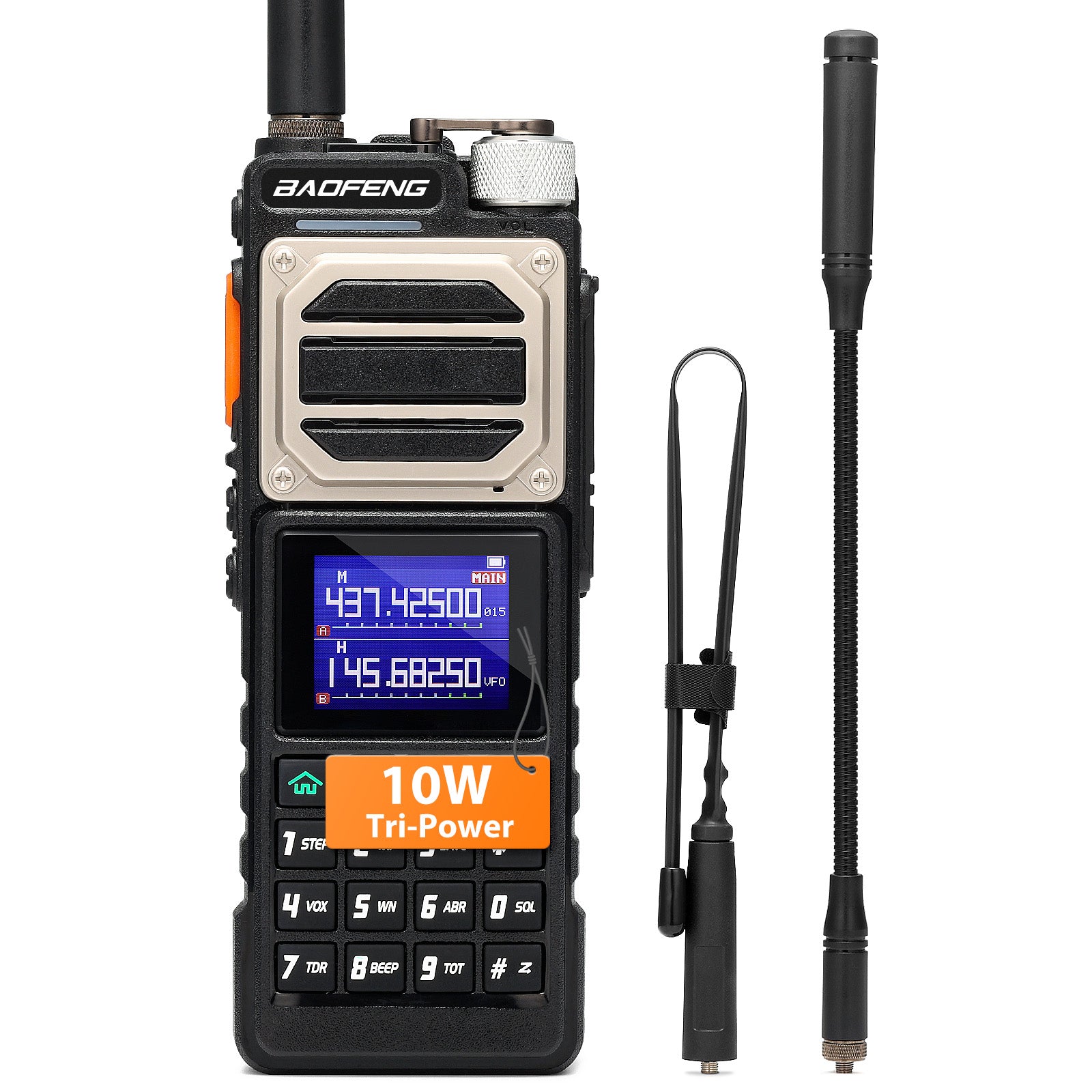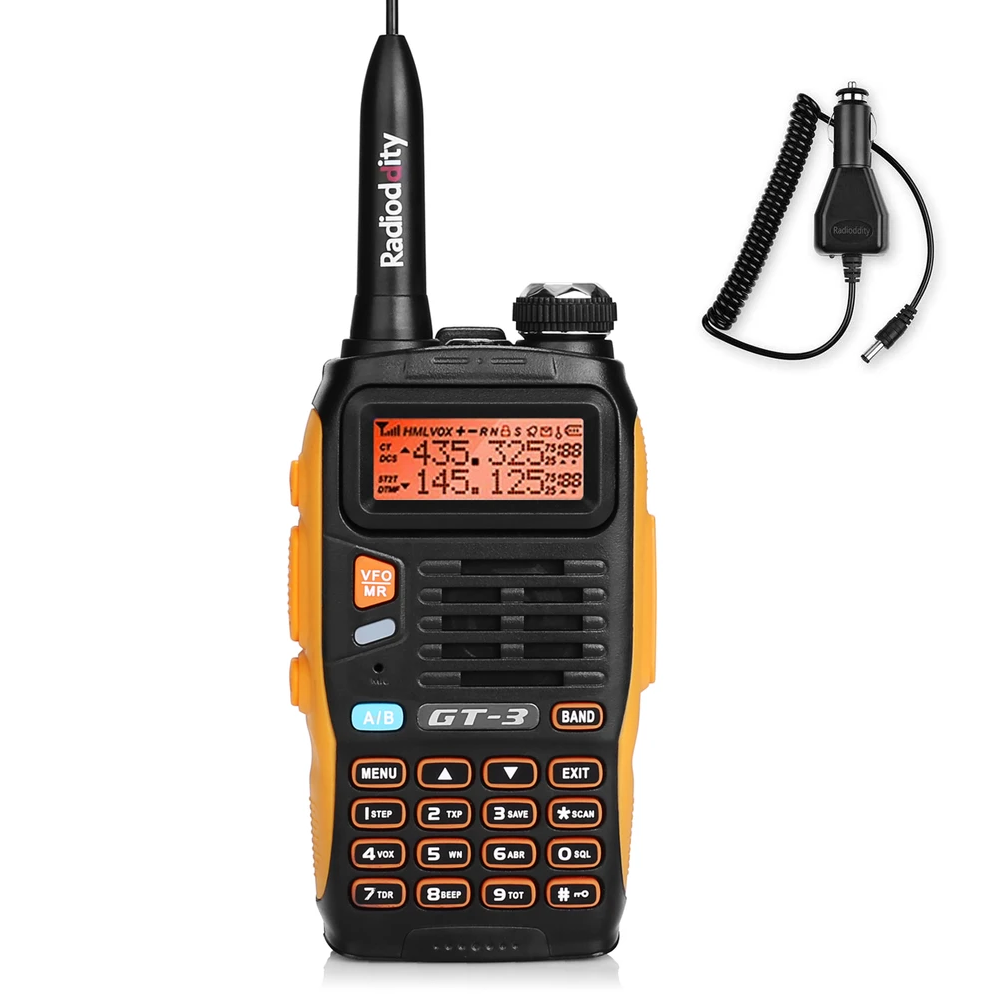Everything You Want to Know about Field Day Preparation
- Ham Talk
-
 Posted by Jackson Chen
Posted by Jackson Chen
- Leave a comment
Introduction to Field Day: A Radio Enthusiast's Highlight
As June wanes and the air buzzes with the anticipation of summer, radio enthusiasts across America gear up for an event that is both a test of skill and a celebration of community: Field Day. This annual event, traditionally held on the last weekend of June, is not just about radio—it's about readiness, networking, and the spirit of amateur radio.
Similarly, Winter Field Day takes place in January and emphasizes outdoor operations and emergency preparedness, but participants must deal with cold temperatures, snow, and other winter elements. This event provides a valuable opportunity for operators to practice setting up stations in adverse weather conditions, further honing their ability to communicate effectively in challenging situations.
Field Day is the culmination of year-round passion, where participants set up temporary communication sites in various outdoor locations. From remote fields to city parks, these setups come to life with the chatter of Morse code, the hum of generators, and the thrill of making contact with someone miles away without conventional power sources.

The Significance of Field Day
Promoting Radio Communication Skills
Field Day is akin to an Olympic event in the world of radio communication. It's where seasoned veterans and fledgling operators come together to demonstrate their ability to establish and maintain communication in less-than-ideal conditions. These skills are not just for show—they are essential for emergencies where traditional communication infrastructures might fail.
Networking and Learning Opportunities
Field Day also serves as a grand meetup of minds. It's a time when hobbyists can rub elbows with emergency responders, when the old guard can impart wisdom to the new, and when long-distance friendships are formed over the airwaves. It's a hands-on learning experience that no classroom could replicate.
Preparing for Field Day
Understanding the Objectives
The core objective of Field Day is simple: communicate with as many other stations as possible over a 24-hour period. But beneath this lies a multitude of goals—testing equipment, practicing quick setup and breakdown, and improving operational skills in a simulated emergency.
Selecting the Right Equipment
Your equipment is your lifeline during Field Day. Each piece must be carefully selected and tested from transceivers to antennas, power sources to tuners, and everything in between. Battery-powered gear and solar chargers are popular choices, reflecting the event's emphasis on self-reliance.
For those looking to upgrade their setup, consider the Xiegu X6100, a powerful SDR transceiver with Bluetooth and Wi-Fi capabilities, perfect for Field Day's diverse communication demands. If you need a radio that's easy to use with a wide-range antenna tuner, the Xiegu G90 offers a detachable display and a beautiful color LCD screen. For a compact, robust option, the Xiegu G106 covers all HF amateur bands and also provides data communication modes.

Making its debut this year, the Xiegu X6200 offers unparalleled features that elevate it to the top of the list for Field Day enthusiasts. This cutting-edge transceiver is not only multifaceted with its ability to cover all HF bands, but also boasts a built-in auto antenna tuner, a highly sensitive receiver, and an FT8 decoder.
The X6200's 4-inch color screen, powered by a robust mobile processor, ensures a visually stunning and responsive user interface. With a built-in sound card and wireless operation capabilities (Bluetooth/Wi-Fi), the X6200 is designed for seamless and engaging communication. Its compact design is further enhanced by a replaceable 3200mAh battery, ensuring that operators can enjoy extended use in the great outdoors. The X6200 is a testament to innovation, providing a state-of-the-art tool for those who demand the best in amateur radio technology.

Antenna Considerations
The Radioddity HF-008 Antenna is a portable powerhouse designed for ham radio enthusiasts. With its detachable split structure and a storage length of just 78 cm / 30.7 inches, it's the perfect companion for outdoor Portable On The Air (POTA) excursions. This antenna covers 6-80 Meters across eight bands, providing versatile multi-band coverage with optimal performance. The HF-008 is built to last, offering a windproof design crafted from high-quality materials, and it supports a PEP of up to 200W (SSB) and 100W (CW).

The Radioddity M916 Magnetic Base offers exceptional stability and support for larger and longer ham antennas. With a large diameter and a 4M/157'' RG-58AU cable, this magnet mount ensures secure attachment and reliable communication. Its strong magnetism allows for worry-free driving, and it features a user-friendly installation process with scratch-resistant soft rubber pads.

Powering Your Field Day: Essential Supplies
A reliable power source is critical for a successful Field Day. The Xiegu DH100 Power Bank is a versatile power station with multiple charging options, including wireless support. It's perfect for keeping all your devices charged throughout the event.

For those looking to embrace green energy, the Raddy SP30 Solar Panel is a highly efficient 30W solar panel that's lightweight, portable, and can charge multiple devices at one time, ensuring you stay powered even in remote locations.

The Raddy Backpack is specially designed for outdoor use and HF transceivers. It features plenty of pockets, a 180° opening for easy access, and a built-in USB charging port. The backpack is dust and rainproof, offering comfort and ergonomic design for long-distance carrying.

The Radioddity PB3 Case provides ample storage space with a customizable foam interior for a snug fit of your gear. It includes secure latches, padlock hasps, a pressure relief valve, and rubberized handles for comfortable and secure transport.

Enhancing Your Field Day Comfort
Field Day isn't just about the radios; it's also about comfort and convenience. The Raddy CL-1 Camping Lantern offers versatile lighting options and effortless charging, making it the perfect companion for your overnight Field Day adventure.

For those warm summer nights, the Raddy MS-1 Indoor Insect Trap and the MZ-1 Outdoor Bug Zapper keep your operating space bug-free, allowing you to focus on the airwaves without swatting away mosquitos.
Location Scouting
The right location can make or break your Field Day experience. Look for sites with clear horizons, minimal interference, and a balance of sun and shade. Accessibility is important, too—remember, you'll be transporting a lot of gear!
Setting Up for Success
Establishing Your Temporary Communication Site
Setting up your site is like assembling a complex puzzle. Start with a solid plan, erect antennas with precision, and arrange your operating station ergonomically. Time is of the essence, but so is accuracy.
Ensuring Safety and Compliance
Safety is paramount. Every precaution must be taken to prevent accidents, from securing antenna masts to managing power cords. Additionally, all operations must comply with the rules set forth by the event organizers and the FCC.
Maximizing Your Field Day Experience
Strategies for Effective Communication
Be prepared to pivot between frequencies and modes, from voice to digital to CW. Log contacts meticulously and listen for faint calls through the static.
Engaging with Other Participants
Take the time to connect through your equipment and in person. Share stories, exchange tips, and build relationships to enhance your Field Day and your involvement in the amateur radio community.
After the Event
Post-Field Day Analysis
Reflect on your successes and challenges after the antennas come down and the radios fall silent. What worked well? What could be improved? This analysis is how you grow as an operator and prepare for real-world emergencies.
Sharing Your Experiences
Document your Field Day journey in blogs, social media, or local club meetings. Your stories inspire others and contribute to the collective knowledge of the amateur radio community.
Conclusion: The Lasting Impact of Field Day
Field Day is more than just an event—it's a cornerstone of the amateur radio culture. It reinforces the importance of readiness, the joy of communication, and the bond among those who call the airwaves home.
We'd love to hear how you're preparing for Field Day. Share your tips, setup plans, or your favorite Field Day memories in the comments below. Let's continue to grow and learn together, making each Field Day better than the last.
![Radioddity GD-168 [OPEN BOX] - Radioddity](http://radioddity.myshopify.com/cdn/shop/files/GD-168_1600x1600_3922a234-2fe4-4b80-8282-3f6d17a10d71.png?v=1741052607)










![Baofeng GT-5R 5W Dual Band Radio [Upgraded Legal Version of UV-5R] - Radioddity](http://radioddity.myshopify.com/cdn/shop/products/GT-5RImage.png?v=1616751303)
![Baofeng UV-5R PLUS [5 Colors] | DUAL BAND | 4/1W | 128CH | FLASHLIGHT - Radioddity](http://radioddity.myshopify.com/cdn/shop/products/3_58c037e1-560a-4c85-bd75-67c202269d29.jpg?v=1620894599)










![GA-2S UHF Long Range USB Two way Radio [2/4/6 Packs] - Radioddity](http://radioddity.myshopify.com/cdn/shop/products/5_96d2d28c-8609-4f29-926b-d423141df2f4.jpg?v=1598864722)



![Baofeng BF-888S [2 Pack] | UHF | 5W | 16CH | CTCSS/DCS | Flashlight - Radioddity](http://radioddity.myshopify.com/cdn/shop/products/1___1___1.jpg?v=1609202373)
![Baofeng GT-1 [2 Pack] | UHF | 5W | 16CH | Flashlight | FM Function Two-Way Radio - Radioddity](http://radioddity.myshopify.com/cdn/shop/products/ia_100000006122.jpg?v=1610525724)




















1 comment
MIKE MURRAY KC8PMG
AN EXCELLENT ARTICLE ON FIELD DAY. I’M GOING TO SERIOUSLY CONSIDER THE RADDY MZ-1.
KEEP UP THE GREAT WORK!